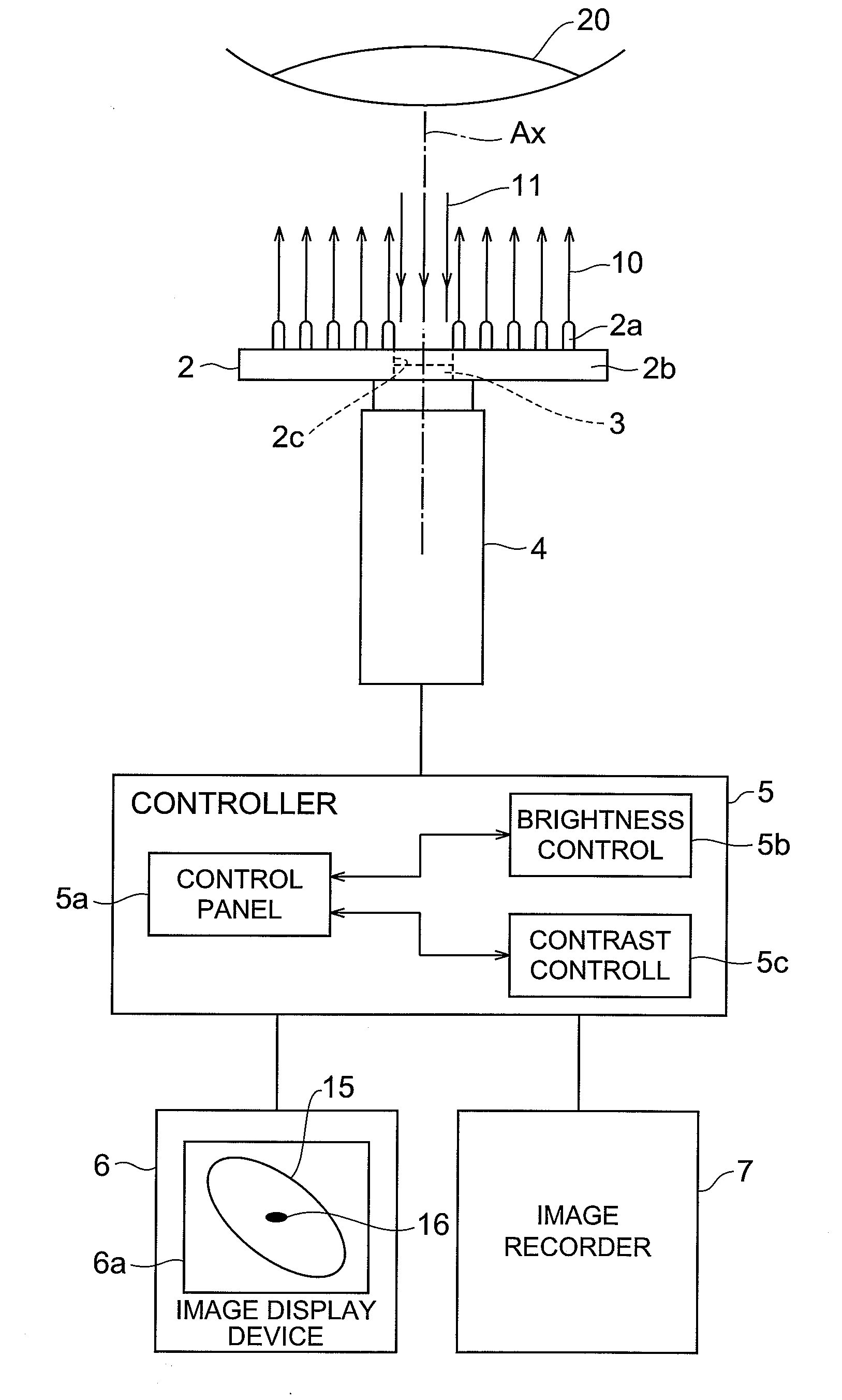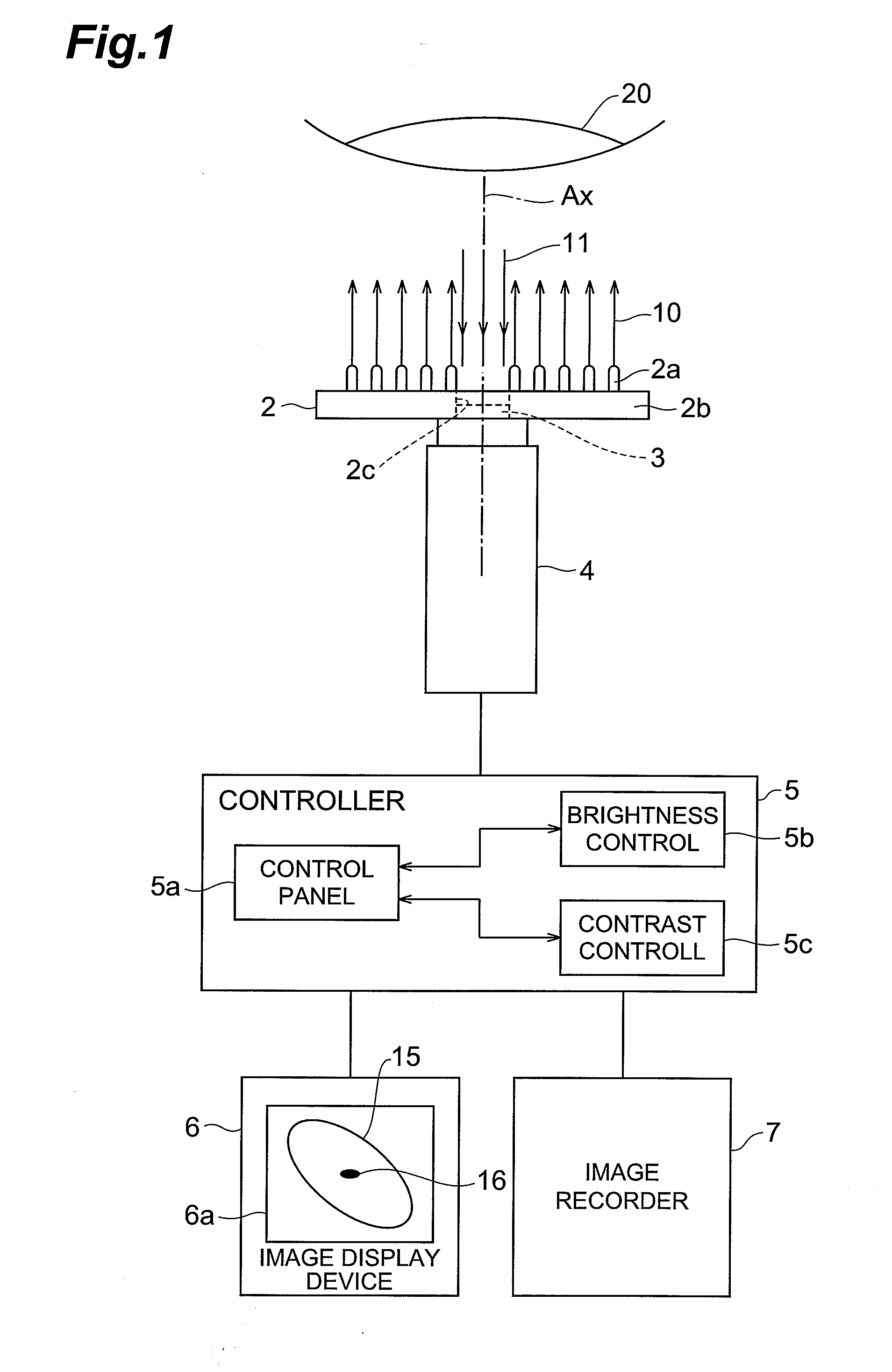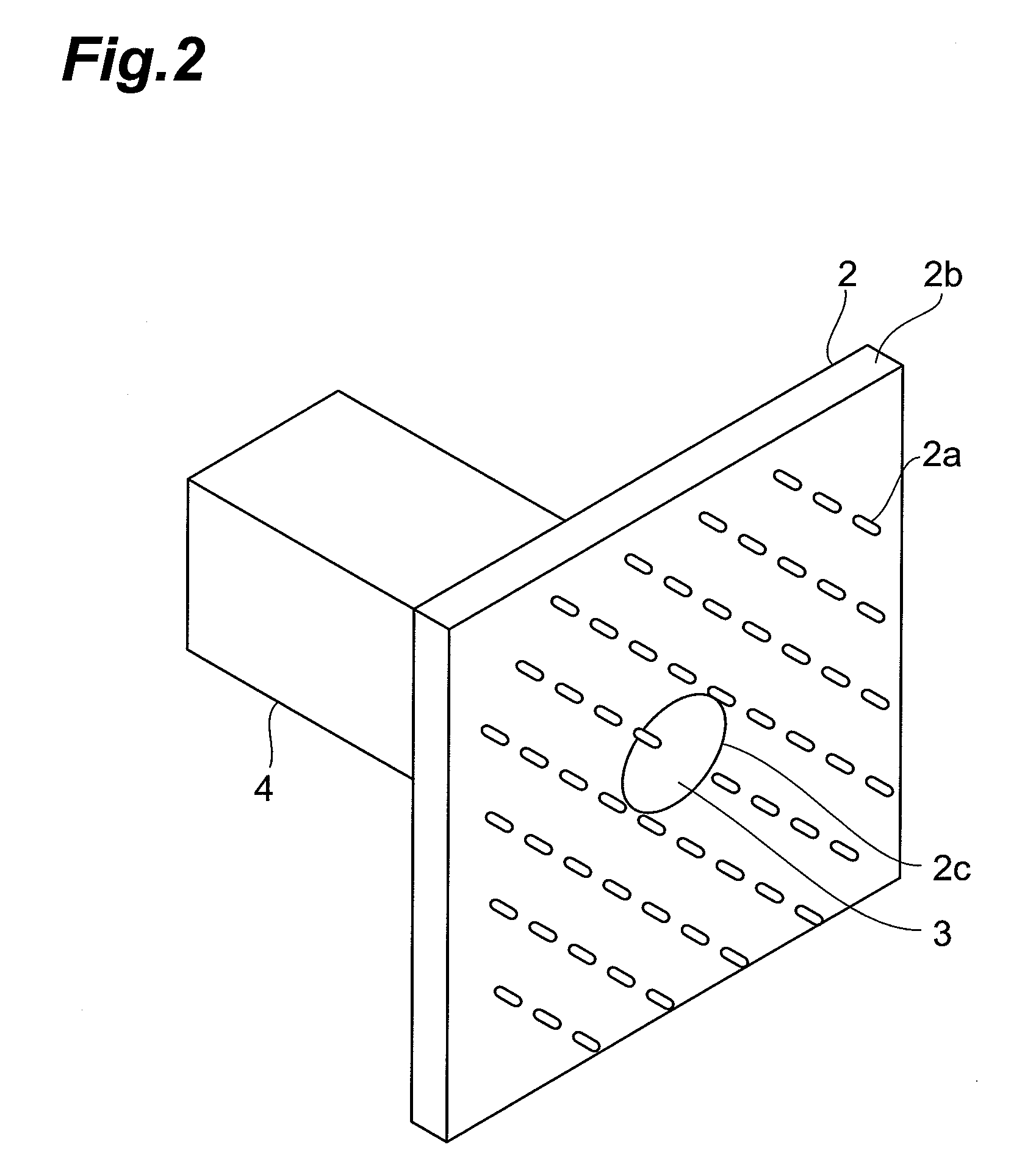Method for detecting cancer using icg fluorescence method
a fluorescence and cancer technology, applied in the field of detecting cancer using an icg fluorescence method, can solve the problems of low survival, accessory cancer lesion that cannot be detected by conventional preoperative examination or intraoperative macroscopic observation, and inability to complete the cure of cancer in many cases, so as to improve the 5-year survival rate of patients
- Summary
- Abstract
- Description
- Claims
- Application Information
AI Technical Summary
Benefits of technology
Problems solved by technology
Method used
Image
Examples
example 1
[0069]Example 1 was a case of a male in his 50s. Preoperative contrast CT detected the presence of a single HCC, 40 mm in diameter, in the S5 / 8 segment of the liver. FIG. 3A is an image showing the result of contrast CT. The arrow indicates the HCC. When the patient's abdomen was cut open and intraoperative diagnosis was carried out with the PDE, a fluorescent area, 5 mm in diameter, was detected in the S4 segment of the liver, in addition to the main tumor (main lesion). Therefore, this part (the accessory lesion) was also resected. FIG. 3B is a near-infrared fluorescence intensity distribution image (measured after the abdomen was opened but before the resection) from ICG in the liver. The arrow (arrowhead) at right indicates the fluorescent area (accessory lesion), 5 mm in diameter, in the S4 segment of the liver. The larger fluorescent area, indicated by the arrow on the left, is the main tumor area (main lesion). Based on histological tests on the resected tissue, the main tumo...
example 2
[0070]Example 2 was a case of a male in his 70s. Preoperative contrast CT detected the presence of a single HCC, 45 mm in diameter, in the S2 / 3 / 4 segment of the liver. FIG. 4A is an image showing the result of contrast CT. The arrow indicates the HCC. From the contrast CT image, the HCC was diagnosed to be simple nodular type. But after opening of the abdomen, and intraoperative diagnosis using the PDE, some fluorescent areas (accessory lesions), 2 to 3 mm in diameter, were detected scattered around the main tumor (main lesion). Therefore, the area to be resected was made to include these, and the resection was carried out. FIG. 4B is a near-infrared fluorescence intensity distribution image (measured after the abdomen was opened but before the resection) from ICG in the liver. The fluorescent area indicated by the arrow at right is the main tumor area (main lesion). The two arrows (arrowheads) at left indicate fluorescent areas (accessory lesions), 2 to 3 in mm diameter, seen aroun...
example 3
[0071]Example 3 was a case of a male in his 60s. Preoperative contrast CT detected the presence of a single HCC, 25 mm in diameter, in the S8 segment of the liver.FIG. 5A is an image showing the result of contrast CT. The arrow indicates the HCC. When the abdomen was opened, the surface of the liver was found to be irregular. Therefore, the identification of the main tumor (main lesion) by intraoperative ultrasonography diagnosis was difficult. But intraoperative diagnosis using the PDE could confirm the HCC areas (main and accessory lesions) as fluorescent areas, which made it easy to decide the area to be resected. FIG. 5B and FIG. 5C are near-infrared fluorescence intensity distribution images (measured after the abdomen was opened but before the resection) from ICG in the liver. The arrow in FIG. 5B indicates the main tumor (main lesion), and the arrow (arrowhead) in FIG. 5C indicates a fluorescent area (accessory lesion), 5 mm in diameter, in the S5 segment of the liver. Based ...
PUM
| Property | Measurement | Unit |
|---|---|---|
| center wavelength | aaaaa | aaaaa |
| center wavelength | aaaaa | aaaaa |
| wavelength | aaaaa | aaaaa |
Abstract
Description
Claims
Application Information
 Login to View More
Login to View More - R&D
- Intellectual Property
- Life Sciences
- Materials
- Tech Scout
- Unparalleled Data Quality
- Higher Quality Content
- 60% Fewer Hallucinations
Browse by: Latest US Patents, China's latest patents, Technical Efficacy Thesaurus, Application Domain, Technology Topic, Popular Technical Reports.
© 2025 PatSnap. All rights reserved.Legal|Privacy policy|Modern Slavery Act Transparency Statement|Sitemap|About US| Contact US: help@patsnap.com



